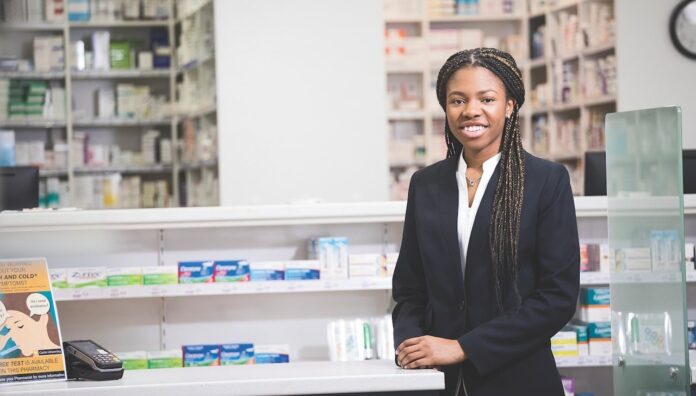There are a few simple techniques that can go a long way toward making transgender and gender-diverse patients, as well as all LGBTQIA+ people, feel welcome and respected.
Among those in the LGBTQIA+ community, transgender and gender diverse (TGD) patients have unique health needs. They may also experience greater health disparities due to experiences of discrimination and marginalisation within Australia’s healthcare system.
Educational interventions to improve pharmacist readiness to provide care for transgender patients are needed, researchers have found, as TGD people have reported that pharmacists’ lack of healthcare knowledge about their needs and limited cultural awareness are barriers to accessing quality healthcare.1
In many instances, these patients find themselves teaching healthcare providers about TGD care. Community pharmacists can support TGD people by supplying gender-affirming medicines and preventive care in a TGD-friendly environment.2,3 An inclusive environment and staff competent in LGBTQIA+ culture are also essential to adequate healthcare delivery to people who are TGD.4
Swapna Chaudhary MPS, a pharmacist lecturer at James Cook University (JCU), and researcher exploring the role of pharmacists providing healthcare to TGD people (see Case 1) maintains that ‘there is a need for education in transgender care for both pharmacists and pharmacy students, so that they are both confident and comfortable to play a meaningful role in transgender care.’
By providing access to TGD healthcare education in therapeutics and cultural sensitivity training, pharmacists can improve health disparities for TGD people and contribute to improving the overall health outcomes for this group. An environment of cultural safety for all LGBTQIA+ people can be created with displays of rainbow pride flags and posters, including pronouns on name badges and inclusive language training for all staff.
AP talked to three pharmacists about how they create a gender and culturally inclusive environment.

Swapna Chaudhary MPS [she/her]
Community Pharmacist/ Lecturer, PhD candidate, James Cook University Townsville, Queensland
Case 1
Alex [he/him], a 25-year-old AFAB (assigned female at birth), started hormonal therapy about 5 months ago.
He was on no other medicines but saw a psychologist/therapist regularly. When Alex first visited the pharmacy with a script for testosterone undecanoate 1,000 mg injection (Reandron), I noticed Alex was anxious. I used gender-neutral language until I introduced myself with my name and pronouns and asked for a preferred name and personal pronouns. I dispensed the medicine with his preferred name and provided information about adverse effects, regular monitoring requirements, and local support groups.
Showing cultural sensitivity allowed me to establish trust. Alex was thankful that I asked for his preferred name and was excited to receive medicine labelled with his preferred name for the first time. He kept the medicine box as a memento.
Today he walks into the pharmacy to fill his repeat prescription for a testosterone injection. While handing out his medicine, I notice he looks distressed and offer to discuss, in a private space, what might be bothering him. In the counselling room, he shares with me that testosterone did not cease his menses, and he got a ‘monthly bleed’ today, which added to his dysphoria.
I recommend he visit his treating physician for discussion about options such as progestin-containing tablets, depot injections or IUDs, which may assist in the cessation of menses – options which do not interfere with his masculinisation treatment. Medroxyprogesterone depot or levonorgestrel IUD may cease menses and would also provide contraception.
Testosterone is teratogenic, and although it may suppress menstruation, it may not prevent ovulation. I suggest he considers using regular contraception if he has a sexual partner who produces sperm. I remind him about regular monitoring, blood tests, and preventative measures such as regular cervical screening, STI screening depending on his level of risk, immunisations, refraining from smoking, limiting alcohol consumption, and healthy eating and exercise.
Alex thanks me for connecting him with the support group, saying a supportive community has improved his mental health. The next week, Alex hands me a prescription for medroxyprogesterone depot with a broad smile on his face.

Tim Mizzi MPS [he/him]
Pharmacist/Partner Capital Chemist Raymond Terrace, New South Wales
Case 2
John, aged 19, presents to the pharmacy with their mother.
I had noticed they had started wearing more pink clothes and wigs, and wore trans and rainbow flag badges. John handed in a new prescription for spironolactone (Spiractin) 100 mg and progesterone (Prometrium) 100 mg.
Their current medicines are:
- fluoxetine 20 mg in the morning (anxiety)
- quetiapine 25 mg at night (sleep)
I asked them if it was okay for us to talk about the new medicines and, with consent, we went into the clinic room for a chat. When I asked if the name on the script was correct, there was a laugh and, quietly, the response was ‘I like to be called Ally’.
I then asked ‘what are your correct pronouns?’ to which Ally replied, ‘she/her/they’.
Thanking Ally for sharing this, I said we have the option to nominate the name she would like on the label and can allocate her ‘dead’ name as a Medicare name that floats in the back end of the FRED software system until the official paperwork gets changed. Ally said that would be great.
I told her I would make a note on her file with the correct pronouns so the team could identify her correctly.
After Ally left I had a mini meeting with the pharmacists and dispense technicians to ensure we correctly identify Ally in store when next visiting, and to ensure that when the prescriptions come in for John there is an alert to dispense under the name Ally.
Fast forward 12 months and I have noticed a huge confidence boost in Ally. And her mental health has improved greatly.
Ally’s response: ‘Even before I had started medically transitioning, [pharmacy] staff had started to notice the way that I had presented myself had shifted. I started wearing skirts, push-up bras and shirts that literally had a trans pride flag on it. I was quietly pulled aside and politely asked if I would like to update my details. From then on, staff used my preferred name and pronouns. Even my medication was printed with my preferred name.’
‘Whenever I started a new medication, staff always took the time to explain all of the important details.’
‘I have always felt respected and my concerns listened to.’
‘Staff also wear name badges with their pronouns on them and I think that’s great.’
Top tips for creating cultural safety
References
- Melin K, Hilera-Botet CR, Vega-Velez D, et al. Readiness to provide pharmaceutical care to transgender patients: perspectives from pharmacists and transgender individuals. J Am Pharm Assoc 2019;59(5):651–9.
- Chaudhary S, Ray R, Glass B. Pharmacists’ role in transgender healthcare: a scoping review. Res Social Adm Pharm 2021;17(9):1553–61.
- Redfern JS, Jann MW. The evolving role of pharmacists in transgender health care. Transgender Health 2019;4(1):118–30.
- ACON Health Transhub. Information for clinicians. 2021. At: https://transhub.org.au/clinicians






 ‘We’re increasingly seeing incidents where alert fatigue has been identified as a contributing factor. It’s not that there wasn’t an alert in place, but that it was lost among the other alerts the clinician saw,’ Prof Baysari says.
‘We’re increasingly seeing incidents where alert fatigue has been identified as a contributing factor. It’s not that there wasn’t an alert in place, but that it was lost among the other alerts the clinician saw,’ Prof Baysari says.









